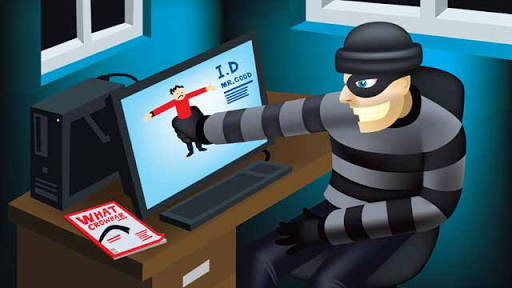📲They Can STEAL Your Identity
THE young woman started getting nasty messages on her answering machine from several men. Then a man reached her by phone and said that he was responding to the indecent invitations she had posted on the Internet. But she did not even own a computer. It took her a while to find out that someone had assumed her identity in cyberspace and was posting the ads on the Internet. Not only that, but the shadowy impostor was giving out her address, directions to her residence, and even advice on how to bypass her house alarm!
Most of us take our identity for granted. We are who we are, and if challenged, we can prove it. But the items we often use as evidence of our identity—birth certificate, identification number,* driver’s license, passport, identification cards, and the like—are becoming so easy to counterfeit or steal that a new crime term has emerged, “identity theft.”
An Epidemic of Fraud
This breed of crime is complex, insidious, and potentially devastating. Victims suddenly discover that someone is running up huge bills, cheating creditors, and causing other havoc in their name. In some lands the law protects the victims from having to pay for these charges, but they can end up with a damaged reputation and bad credit.
Law-enforcement agencies, credit-industry insiders, and consumer groups widely acknowledge that identity theft is causing billions of dollars of losses annually. There is no way of knowing exactly how many people are defrauded through identity theft. One of the biggest problems is that months may go by before a person finds out that his identity has been stolen. Some law-enforcement authorities call identity theft the fastest-growing crime in the United States. Similar problems are reported in other countries.
To make things worse, thieves know that identity fraud is difficult to investigate and that it is seldom prosecuted. “To criminals, it’s a faceless crime,” observes Cheryl Smith, a special investigator. “The victim is a bank or department store. They’re not thinking about harming an individual.”
#Preying on Your Very Name
Identity thieves usually steal one or more key pieces of your personal data, such as an identification number or a driver’s license. Then they use it to impersonate you and open up credit accounts in your name. At the same time, they divert the ensuing paperwork to their own mail drop. They spend as much as they can as quickly as they can. You will not know what is happening until the collection agencies start calling.
How do these unscrupulous individuals steal such personal information? It is very easy. It often starts with collecting personal data that many people casually give out on credit applications or to telemarketers. Some crooks resort to ‘dumpster diving’—digging into your trash cans for bank, mortgage, or credit records. Others intercept financially related mail from mailboxes. ‘Shoulder surfers’ are thieves who use cameras or binoculars to watch their victims punch in numbers at automated teller machines (ATMs) or public phones. In some countries much personal information is readily available at courts, in public documents, or on the Internet.
#Stealing Your Good Name
Once the crook has your identification number, he may also need to get other identifying information, such as your birth date and your address and phone number. With this information, and maybe a false driver’s license with his own picture on it, the thief can begin the crime. A thief will apply for instant credit in person or through the mail, posing as you. He often provides an address of his own, claiming that he has moved. In their rush to issue credit, credit inspectors do not always verify information or addresses.
So once the impostor opens the first account, he can use this new account along with the other pieces of identifying information to add to his credibility. This further facilitates the proliferation of the fraud. Now the crook is well on his way to getting rich and, while he is at it, ruining your credit and good name.
Repairing the damage can be difficult, time-consuming, and frustrating. Mari Frank, an attorney from California, found out how hard this can be when an impostor ran up about $100,000 worth of bills in her name. “I had to write 90 letters and spent 500 hours working to clear my name,” she says. “It’s a fight for your credit and your sanity. . . . Most of the time you don’t know who is doing it, and the perpetrators never get caught.”
#How to Protect Yourself From Identity Theft
● Only give out your identification number when absolutely necessary.
● Do not carry extra credit cards, your identification card, birth certificate, or passport in your purse or wallet, except when necessary.
● Shred or rip up preapproved credit applications before throwing them away. Do the same with bank statements, phone bills, credit card receipts, and so forth.
● Use your hand as a shield when using an automated teller machine or when making long-distance phone calls with your phone card. ‘Shoulder surfers’ may be nearby with binoculars or a camera.
● Obtain a locked mailbox to reduce mail theft.
● Pick up new checks at the bank instead of having them sent to you by mail.
● Keep a list or a photocopy of all credit account numbers, and keep it in a safe place.
● Never give out your credit card number or other personal information over the phone unless you have a trusted business relationship with the company and you have initiated the call.
● Memorize your password. Do not keep a written record of passwords in your purse or wallet.
● Get a copy of your credit report regularly if possible.
● Have your name removed from promotional lists operated by credit reporting bureaus and those who extend credit..jpeg)
Be careful out there great blog
Thanks